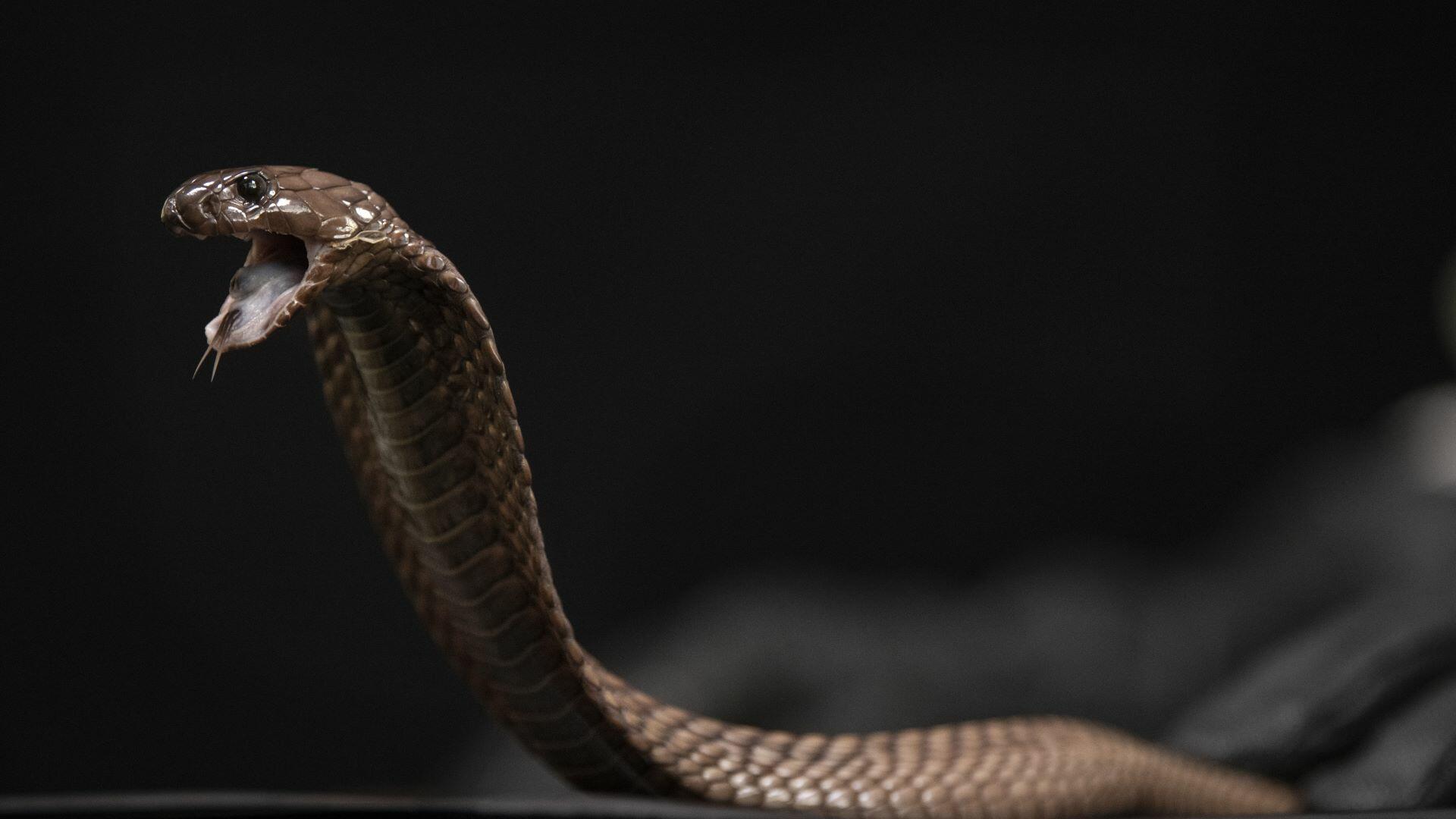
In a new article for The Conversation, Professor Nick Casewell from Liverpool School of Tropical Medicine and Dr Steven Hall from Lancaster University explore new developments in the treatment of spitting cobra venom.
The World Health Organization estimates that 1.8 million to 2.7 million people are envenomed by snakes annually, resulting in upwards of 138,000 deaths.
In sub-Saharan Africa alone, snakebite annually kills between 20,000 and 32,000 people, though a 2022 paper suggests this is likely a gross underestimate.
Africa is home to some of the most amazing and beautiful, but also dangerous, snakes on the planet. Tiny saw-scaled vipers cause potentially lethal bleeding problems. Large-bodied puff adders and spitting cobras have venoms that destroy flesh via necrosis. And the venom of green and black mambas can rapidly cause death by paralysing the victim’s respiratory muscles.
Most research on snakebite treatments has been focused on keeping the patient alive. But snakebite also leaves about 400,000 snakebite survivors permanently scarred or disabled.
The tissue damage caused by necrotic snake venoms results from certain toxins destroying a victim’s skin, muscle, and even bone. These cytotoxins kill cells. The damage can be severe. Often the dead flesh, affected digits or even limbs have to be surgically removed.
One can easily imagine the devastation caused by such injuries to snakebite survivors and their families. But what if this necrosis could be stopped before it began?
Over the past few years, much of our work has been focused on developing new therapies for this local tissue necrosis. One avenue we have been exploring is using repurposed drugs which inhibit snake venom cytotoxins. These are drugs originally developed for other diseases and which have already been determined safe in human clinical trials.
Our research has made us optimistic that administering such drugs locally at the bite site is a viable way to treat the necrotic effects of snakebite envenoming. Our findings also suggest that the drugs are effective across different species of snake, so that a globally effective treatment may be possible.
Getting a drug to market is a lengthy process that requires years of dedicated research and significant capital. But these exciting findings are the first step to delivering new and desperately needed drug treatments to victims of injuries induced by snakebites.
Current treatment of snakebite
The symptoms of snakebite are commonly split into three categories:
- haemotoxicity (bleeding and blood clotting)
- neurotoxicity (paralysis of muscles and respiration)
- cytotoxicity (tissue destruction).
The venoms of some snakes will primarily cause symptoms from only one of these categories. But many cause more than one, which makes them more complicated to treat.
Antivenom is currently the only available treatment for snakebite envenoming that can inhibit the damaging effects of venom toxins. It often saves lives, but current antivenoms also present some difficulties. They are costly, have to be kept cold and must be injected intravenously by a medical professional.
And antivenoms are largely ineffective against the tissue destruction caused by cytotoxic snake venoms.
This is partly because the antibodies contained within antivenoms are large. It’s harder for them to move from the blood into the peripheral tissue where the snakebite occurred. Then there’s the time it takes to get proper medical treatment for the patient. In some rural communities it can take 5 to 9 hours for a victim to reach hospital.
It is for these reasons that we are interested in developing new snakebite treatments that could be administered almost immediately after the bite, buying time to reach hospital and helping to save both life and limb.
Drugs for snakebite-induced necrosis
Small molecule drugs are biologically active compounds with a low molecular weight and are used widely in healthcare, from medicines for headaches (aspirin) to cancer (doxorubicin). Our research has previously shown how certain small molecule drugs and drug combinations can protect against the lethal effects of venoms from various snake species. These include the repurposed drugs marimastat and 2,3-dimercapto-1-propanesulfonic acid (DMPS), which inhibit one family of toxins, and varespladib, which targets another.
We recently published an article in Nature Communications describing the impressive preclinical efficacy of these same three drugs in two different dual-drug therapies.
The injection of these combination therapies directly into the “snakebite-site” inhibited the skin damage caused by a variety of viper snake venoms from different parts of the world.
Even more impressive was that the protective effects remained even when the drugs were injected up to an hour later. This shows there is a window of opportunity after a snakebite occurs where such a treatment could be effective.
In a second project we identified how two groups of toxins – called phospholipases A2 and cytotoxic three finger toxins – work together to cause tissue damage from spitting cobra bites. This suggested that if we inhibited just one of these toxin groups, it could be sufficient to reduce the venoms’ overall cytotoxic potency.
Confirming this hypothesis, we found that the phospholipase A2-inhibitor varespladib alone almost completely neutralised the cytotoxic effects of multiple African spitting cobra venoms when injected directly into the snakebite-site. More importantly, this drug also inhibited skin necrosis when administered up to an hour after the snakebite and displayed similar protective properties against venom-induced muscle necrosis.
Together, our data make us confident that small molecule drugs will make it possible to drastically reduce the severity of envenomings in tropical snakebite patients.
This article is republished from The Conversation under a Creative Commons license. Read the original article.